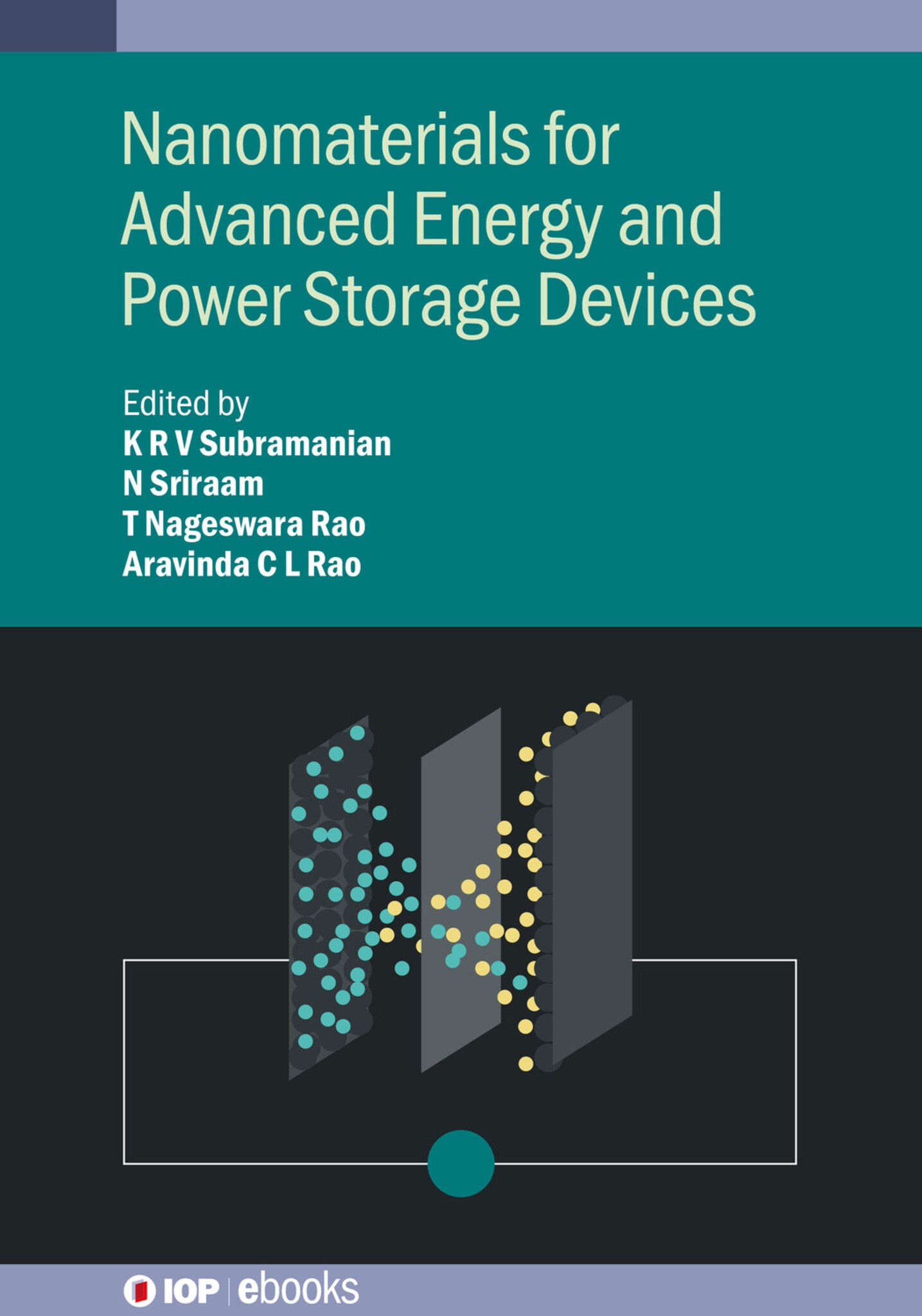We're sorry. An error has occurred
Please cancel or retry.
Nanomaterials for Advanced Energy and Power Storage Devices

Some error occured while loading the Quick View. Please close the Quick View and try reloading the page.
Couldn't load pickup availability
- Format:
-
03 October 2024

Electrochemical energy storage is at the forefront of energy storage technology. It plays a large part in our lives, ranging from portable electronics to hybrid vehicles. The purpose of this book is to focus on recent advances in nanomaterials for advanced energy and power storage devices. The advancements include flow based energy devices, thermal energy storage devices, quantum dot based devices, electrodes and electrolytes of state-of-art and expand on the basic principles, operational practices and technological advancements. This will help the readers to assimilate the latest trends in the advanced energy and power storage devices. This book would appeal to researchers, scientists engaged in developing high performance devices.
Key Features
- Covers the latest research on the use of nanomaterials in state-of-the-art advanced electrochemical energy storage systems
- Covers flow batteries, hybrid supercapacitors
- Nanomaterials covered include quantum dots, thermal phase change materials, complex electrolytes
- Focuses on applications with an emphasis on bulk usage and scale up
- Includes advanced characterisation and testing, and future trends and directions
- Includes real-world case studies and end-of-chapter summaries

TECHNOLOGY & ENGINEERING / Materials Science / General, Materials science, TECHNOLOGY & ENGINEERING / Nanotechnology & MEMS, TECHNOLOGY & ENGINEERING / Power Resources / Alternative & Renewable, Nanotechnology, Energy technology and engineering

Table of Contents:
Chapter 1: Nanomaterials for static and dynamic flow supercapacitors
1.0 Introduction
1.1 Classification based on working principle
1.2 Classification based on morphology
1.3 Materials used as substrates in flexible supercapacitors
1.4 Materials used for making the electrode
1.5 Materials used as the electrolyte
1.6 Electrochemical flow capacitor
1.7 Conclusion
Chapter 2: Emerging technological advancements in thermal energy storage
2.1 Introduction
2.2 TES Technologies
2.3 Latent heat storage systems
2.4 Applications of sensible thermal energy storage
2.5 Sensible thermal energy storage
2.6 Latent heat energy storage
Chapter 3: Quantum dots as an efficient supercapacitor for modern world
3.1 Introduction
3.2 Synthesis of carbon quantum dots
3.3 Synthesis of Graphene quantum dots
3.4 Carbon quantum dots for supercapacitors
3.5 Graphene quantum dots for supercapacitors
3.6 Conclusion
Chapter 4: Importance of redox active electrolyte for the next generation energy storage system
4.1 Introduction
4.2 Charge storage principles of Redox electrolytes contains ECs
4.3 Mechanism of diffusion, adsorption, and kinetics of redox electrolyte
4.4 Categories of redox electrolyte
4.4.1 Aqueous systems
4.4.1.1 Anion redox electrolytes
4.4.1.2 Cation redox electrolytes
4.4.1.3 Neutral redox electrolytes
4.4.2 Non-aqueous electrolyte
4.4.2.1 Ionic liquid based redox electrolytes
4.4.2.2 Gel polymer based redox electrolytes
4.5 Dual redox electrolyte non-flow system
4.6 Catholyte and anolyte based redox electrolyte
4.7 Conclusion
Chapter 5: Conclusion on current trends in energy storage system
5.1 Mechanical energy storage
5.2 Heat energy storage
5.3 Electrochemical energy storage
5.4 Electromagnetic energy storage
5.5 Chemical energy storage
5.6 Hydrogen energy storage
5.7 Synthetic gas
5.8 Solar fuels
5.9 Future aspects of energy storage systems



